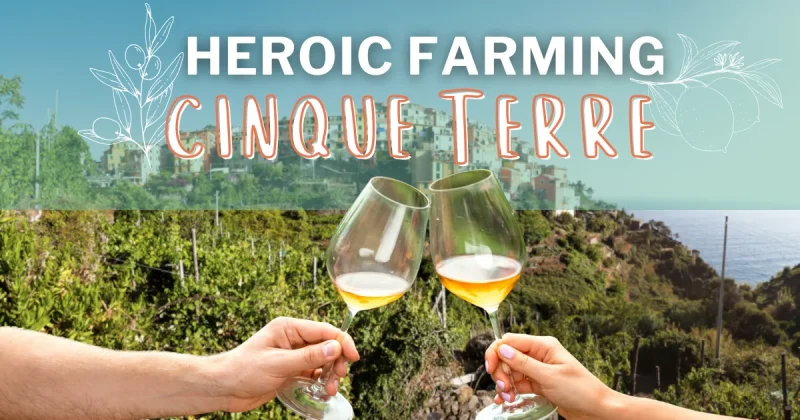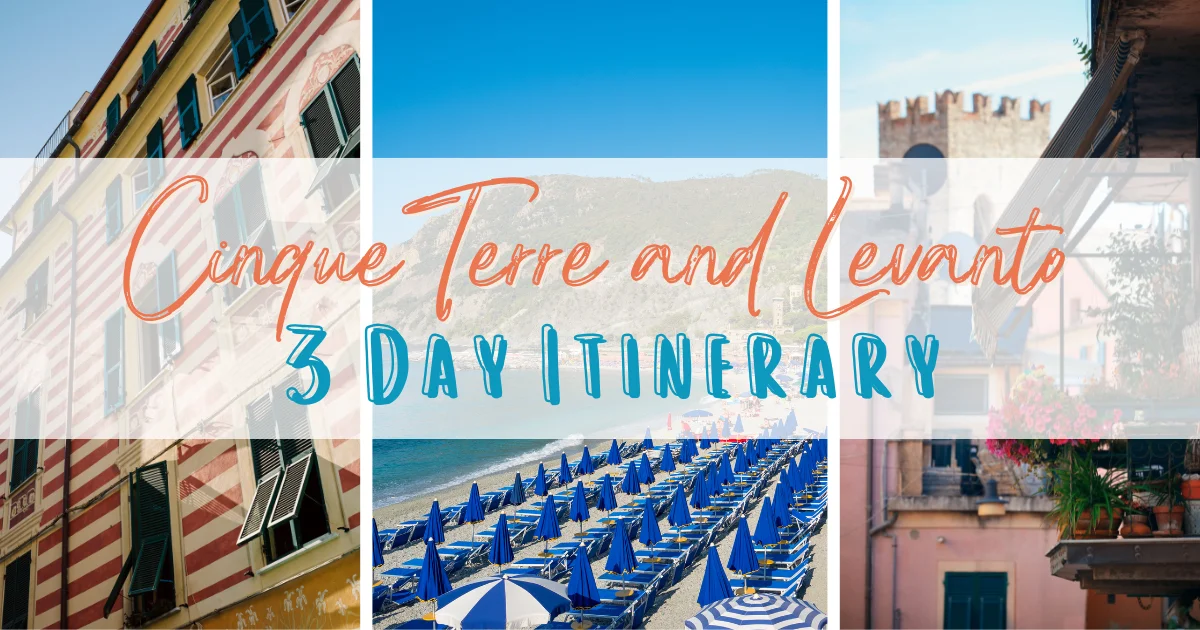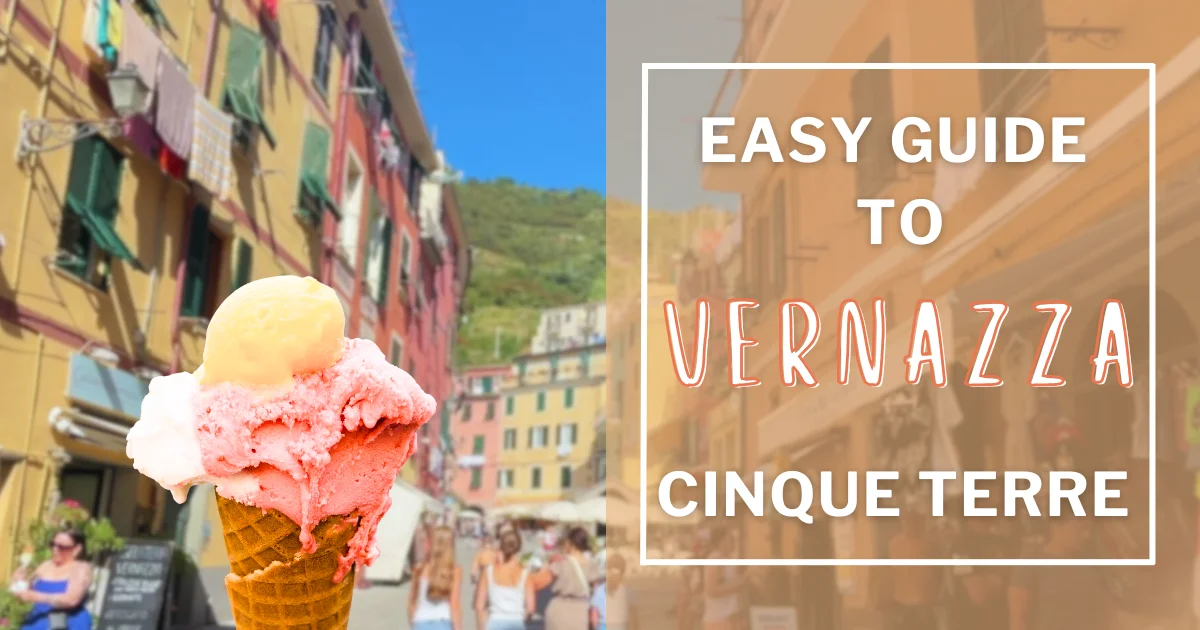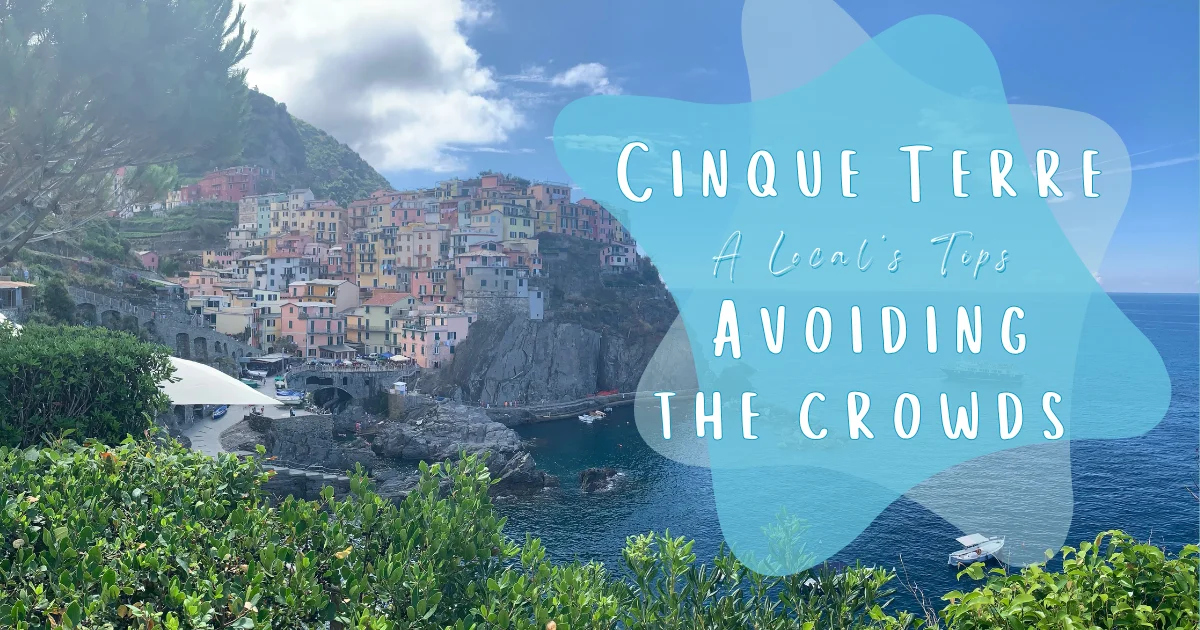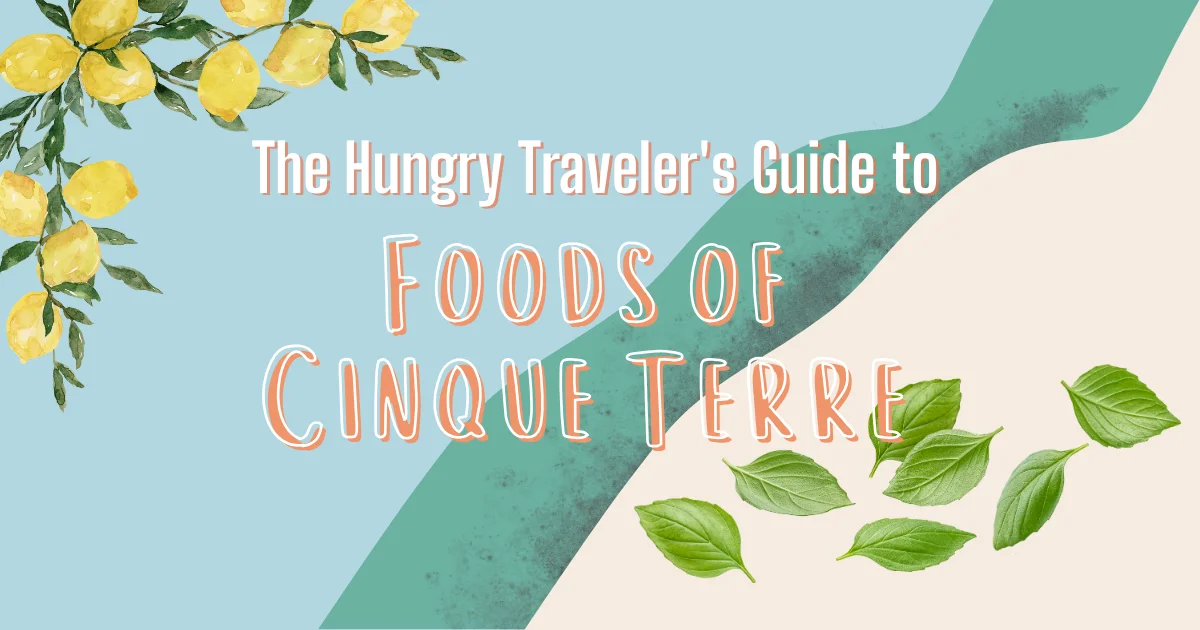A UNESCO World Heritage Site and National Park
Since 1997, the Cinque Terre has been a UNESCO World Heritage Site. Just a year later, it became a Marine Protected Area, and by 1999, it was officially a National Park. But these designations only scratch the surface of its story.
For over a thousand years, people here have practiced heroic farming. Working against gravity and nature to shape vertical hillsides into terraces where grapes, olives, and lemons grow. The foods and produce are as much a part of the cultural identity as the famous towns.
The result? A jaw-dropping landscape that's not just beautiful, but unique.
When you visit Cinque Terre, you can meander through these farms along the ancient paths and pilgrimage trails. An opportunity to connect and appreciate this cultural history.
Heroic Farming
In Cinque Terre, heroic farming is seen in the narrow terraces carved into the cliffs, supported by dry-stone walls. Farmers here grow vines, olives, and lemons by hand on land that seems almost vertical.
The Miracle of the Dry-Stone Walls
Imagine 7,000 kilometers (yes, kilometers!) of dry-stone walls running across cliffs and slopes to hold in tiny plots of farmland. Built without mortar, these walls are crafted from local stones and have been around for over a thousand years. Locals call these little fields “cia’n”, and they're the heart of Cinque Terre’s unique landscape.

These terraces aren’t just for show. They’re where olives, grapes, lemons, and even capers grow, sustained by pure manual labor and care passed down through generations. Today, maintaining these walls is a race against time. The Cinque Terre National Park even supplies stones to help farmers keep them from crumbling.
All Manual, All the Time
There are no heavy industrial farm machines here. The terrain is too steep. Almost everything is done by hand: From planting to harvesting.
The only mechanical help comes from monorail carts: small, single-rail trains that climb the hillsides carrying grapes, olives, and sometimes people.
For a closer look at terraced farms, you can hike the trails that wind between villages. The most beautiful trail (Blue Trail) connects Monterosso to Manarola.
Wine Worth the Climb

Sciacchetrà: The Cinque Terre’s Liquid Gold
This is not your average Italian wine. Sciacchetrà (pronounced “shah-keh-TRAH”) is a rare dessert wine made from sun-dried grapes. It’s sweet, strong (with an alcohol content of around 17%), and incredibly limited in production. Locals often keep it for special occasions, but if you visit a winery, don’t be shy; they may be happy to indulge you with a tasting.
Other wines to try:
- Cinque Terre DOC: A dry white wine blended from local Bosco, Albarola, and Vermentino grapes.
- Pigiaùn and Rossese Bianco: Almost forgotten native varieties that some small producers are bringing back.
- Vermentino: Not just a key grape in Cinque Terre DOC, but some local producers also bottle Vermentino in purezza (100% Vermentino) in very limited quantities. If you see a bottle, give it a try – it’s crisp, elegant, and perfect with the region’s seafood dishes!
One of the best ways to experience a Cinque Terre wine is after a busy day of sightseeing. Across Italy, it’s customary to celebrate the good things in life with an afternoon aperitivo. Our ready-made itineraries include some of our favorite spots in Riomaggiore, Vernazza, and Corniglia, where you can enjoy this local custom.
Visit Cinque Terre with local insights.
We include a visit to 3 towns, suggestions for lunch, aperitivo & dinner. Also includes wine and cultural tour options, self-guided sightseeing routes, cultural and historic notes, and where to take iconic photos.
The Flavors of the Coast
Olive Oil with a View
Most olive groves here exist not for commerce but out of tradition. Still, some wine producers have begun bottling their own DOP Riviera Ligure di Levante extra virgin olive oil.
The color of the oil is a distinctive yellow-green, and the taste is slightly bitter and spicy, with hints of almond and herbs. It’s used in lavish drizzles on local focaccia and is a critical ingredient in combining basil and pine nuts into the local pesto.
Pesto, by the way, was invented in Genoa. It’s been widely adopted throughout Liguria, and there are many ‘cooking’ classes around to help you master the traditional pestle and mortar method of making this delicious dip.
Anchovies of Monterosso: The “Bread of the Sea”
If you’ve never been excited about anchovies, this might change your mind!
Thanks to the salty, clean Ligurian waters, anchovies from Monterosso are prized for their perfect balance of saltiness and delicacy. Traditionally preserved in salt (a method dating back to the Middle Ages), these anchovies can be stored for up to three years. Locals love them with olive oil, garlic, and oregano.
If the thought of salted anchovies gives you heartburn, then try the fresh variety. They can also be tasted in popular local dishes. I recommend “tian de anciue” (also known as “tian de Vernazza”). Traditionally made by fishing families from Vernazza, the anchovies are layered with tomatoes, onions, and potatoes and baked until the flavors infuse.
Don’t miss: The annual Anchovy Festival in Monterosso, held on the third weekend of June.
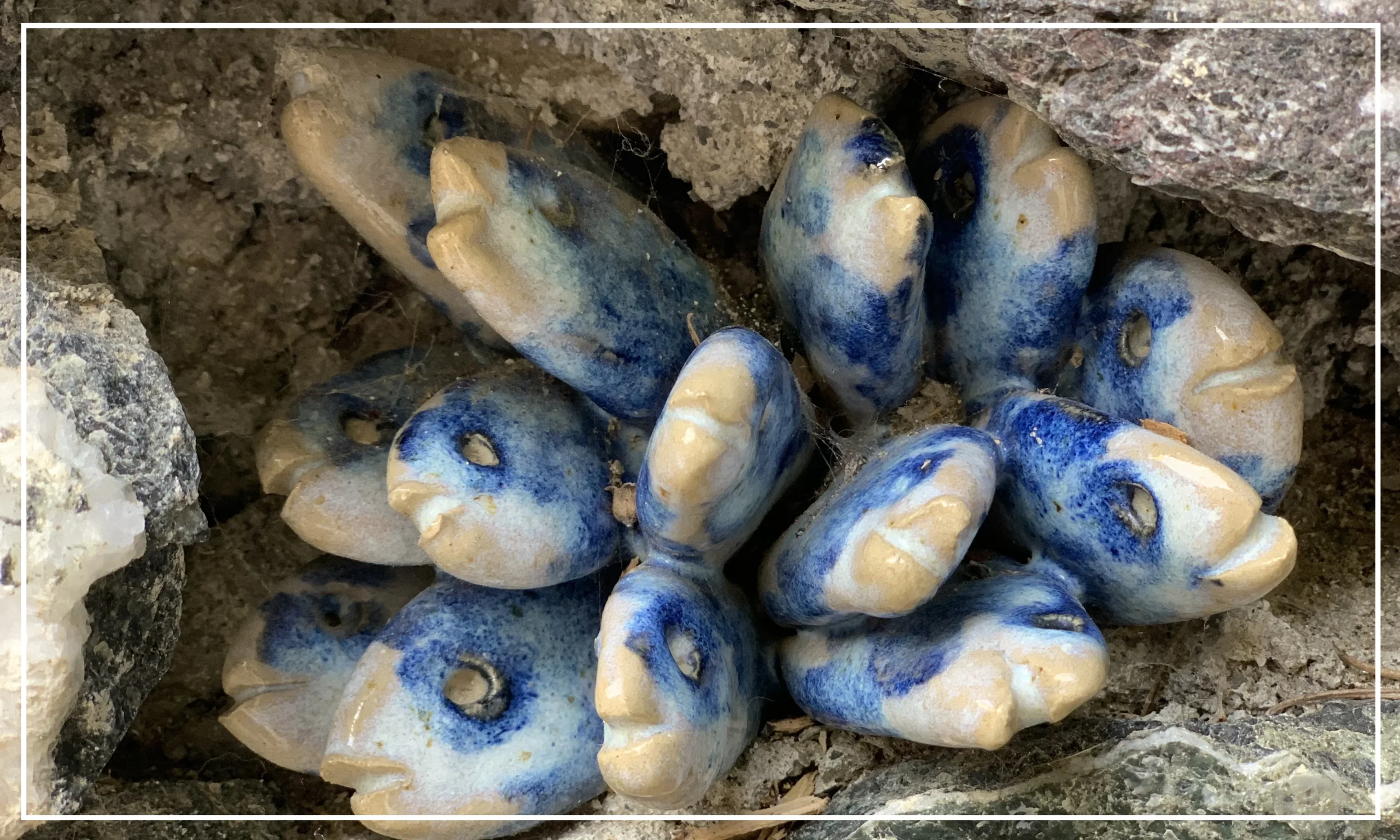
A Scented Trail: Lemons and Poetry in Monterosso
The Nobel Prize-winning poet Eugenio Montale, who spent much of his time in Monterosso, famously loved the lemon groves. During the annual Lemon Festival (held every year in May), the local Pro Loco is known for hosting a guided walk called “8,000 steps in the scent of lemons”. that winds through lemon trees and scenic spots.
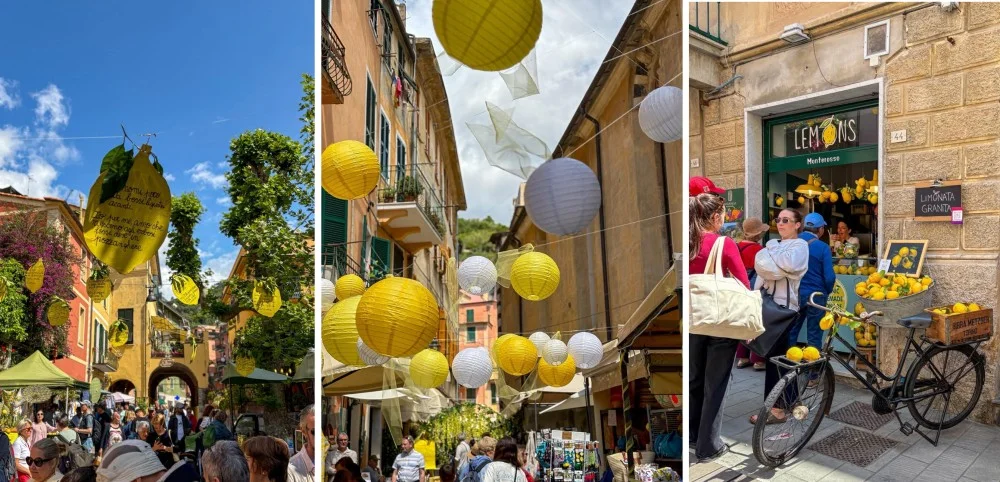
The Lemon Festival is also where you’ll find everything lemony, including zesty lemon marmalade, lemon cakes, and tarts.
It’s also an opportune time to taste Limoncino (lemon liqueur) that is made locally using lemon zest, alcohol, sugar, and water. Pretty much the same as Limoncello. But if you want to be a purist, in this part of Italy, it is never Limoncello. Only ever ask for Limoncino!
Why You Should Stay Awhile
Cinque Terre isn’t a place to rush. It asks for time.
It’s true that many visitors come for 1, 2, or 3 days and prioritize village sightseeing. But for those who want an immersive experience, there’s more to discover and appreciate.
Hike the cliffside trails, wind your way through the terraced farms, taste the produce that was painstakingly grown and harvested, smell the lemon-perfumed air, and connect with a living culture that beckons you to slow down.
Planning your Cinque Terre getaway? You’ll find everything you need in our Cinque Terre ready-made itineraries (immediate downloads to your device).
Visit Cinque Terre with local insights.
We include a visit to 3 towns, suggestions for lunch, aperitivo & dinner. Also includes wine and cultural tour options, self-guided sightseeing routes, cultural and historic notes, and where to take iconic photos.

